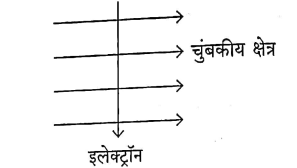1. One ohm is equal to
Answer: 1 Volt × 1 Ampere
2. The SI unit of resistivity is
Answer: Ohm per meter
3. Calculate the number of electrons in a 1 Coulomb charge.
Answer: 6.23 × 10¹⁸ electrons
4. Electric power is equal to 1 Watt
Answer: 1W = 1V × 1A
5. Heating appliances like bread toasters and electric irons are made of alloys rather than pure metals because
Answer: Alloys have higher resistivity
6. A ray passing parallel to the principal axis will go through
Answer: Center of curvature
7. When two devices are connected in parallel between two points A and B, the physical quantity that remains the same between the two points is
Answer: Voltage
8. The phenomenon of light diffraction by colloidal particles is called
Answer: Tyndall effect
9. An object of height 5 cm is placed at a distance of 20 cm from a convex mirror with a curvature radius of 30 cm. What is the height of the image?
Answer: 2.14 cm
10. The magnification produced by rear-view mirrors in vehicles is
Answer: Less than one
11. The type of mirror used by dentists to view enlarged images of patients’ teeth is
Answer: Concave
12. A student conducts an experiment using a convex lens. He places an object at a distance of 60 cm from the lens and finds that the image is formed at a distance of 30 cm behind the lens. What is the power of the lens?
Answer: 5 D
13. Why does a swimming pool appear less deep than it actually is?
Answer: Refraction of light
14. When white light is dispersed through a prism, which color is refracted the most?
Answer: Violet
15. 14 J of work is done to move a charge of 2 C between two points in a conductor. What is the potential difference between the two points?
Answer: 7 V
16. A spherical mirror and a thin spherical lens have a focal length of -15 cm. What is the nature of the mirror and lens?
Answer: Both are concave
17. An object is placed 10 cm away from a convex mirror with a focal length of 15 cm. What is the magnification?
Answer: 0.6
18. If n resistors of resistance R are connected in parallel, what is their equivalent resistance?
Answer: R/n
19. An electron enters a magnetic field perpendicularly, as shown in the figure. What will be the direction of the force acting on the electron?

Answer: To the left
20. The phenomenon of electromagnetic induction is
Answer: The generation of induced electric current in a coil due to relative motion between a magnet and the coil